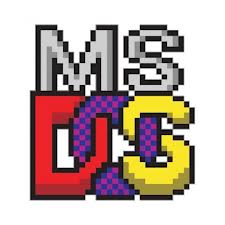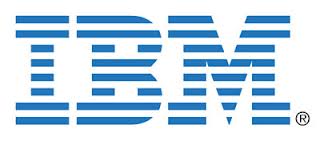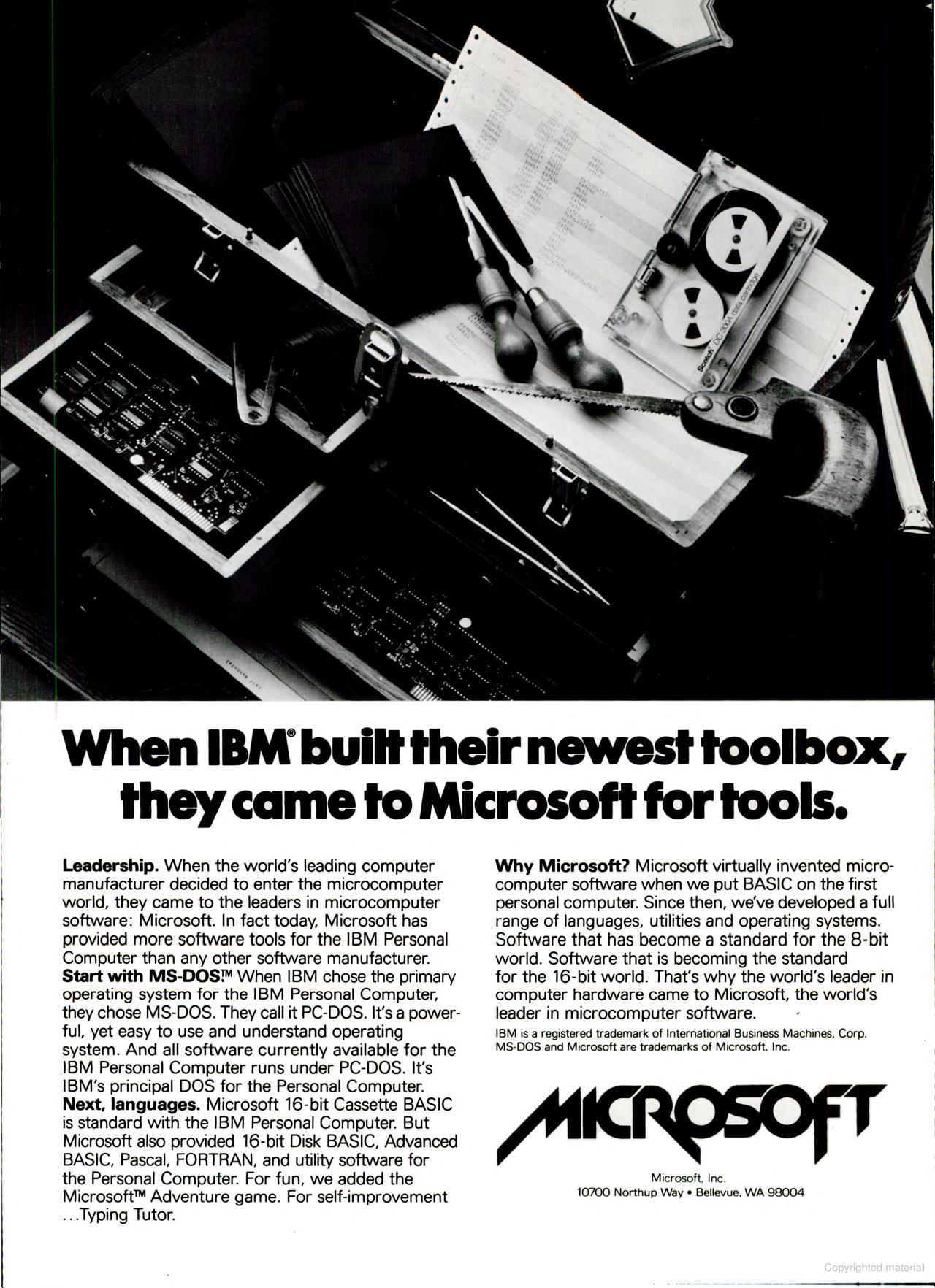DOS Versions
Microsoft MS-DOS
 Microsoft's Disk Operating System (DOS) was originally developed for the IBM PC during the early 1980s. It went through many iterations during the 80s and 90s before being superceded by GUI-based operating systems, most particularly Microsoft's own Windows operating system.
Microsoft's Disk Operating System (DOS) was originally developed for the IBM PC during the early 1980s. It went through many iterations during the 80s and 90s before being superceded by GUI-based operating systems, most particularly Microsoft's own Windows operating system.
History
![]() In May 1979, an American company called ´Seattle Computer Products´ made a
plug-in print expansion card for
the S-100 bus computer that made use of the new Intel 8086 processer.
In May 1979, an American company called ´Seattle Computer Products´ made a
plug-in print expansion card for
the S-100 bus computer that made use of the new Intel 8086 processer.
During development, one of the first of these cards was placed at the disposal of Microsoft, then a small company known for their version of BASIC for the CP/M operating system. About two weeks later at the National Computer Conference in New York, Microsoft showed a BASIC version that was now able to run on the Intel 8086 processer.
Six months later, the sale of these print cards began. Seattle Computer Products now waited for Digital Research (DR) to release a new version of their operating system, CP/M. Another half-year later the release of a new CP/M was not in sight, so Seattle decided, in April 1980, to make its own operating system. Work began in earnest, and by August 1980 Seattle were able to start selling the first version of that new OS, which they named ´QDOS v0.10´. It was quick and dirty, but it worked (QDOS stands for Quick´n´Dirty Operating System).
 Around October of that year, IBM began searching the market for an
operating system for the
yet-to-be-introduced new IBM PC, Model 5150.
Around October of that year, IBM began searching the market for an
operating system for the
yet-to-be-introduced new IBM PC, Model 5150.
IBM had originally intended to use Digital Research's CP/M which was at that time the established industry standard operating system - all computers those days ran either a BASIC interpreter with disk functions, a proprietary operating system, or DR's CP/M.
 Folklore reports various stories about the rift between DR and IBM. The most popular story claims Gary Kildall of DR snubbed the IBM
executives by flying his
airplane when the meeting was scheduled. Another story claims Kildall
didn't want to release
the source for CP/M to IBM, which would be odd, since they released it
to other companies. One noted industry pundit claims Kildall's wife killed the deal by
insisting on various
contract changes. I suspect the deal was killed by the good ol' boy
network. It's hard to
imagine a couple of junior IBM executives giving up when ordered to a
task as simple as
licensing an operating system from a vendor. It wouldn't look good on
their performance reports.
It would be interesting to hear IBM's story...
Folklore reports various stories about the rift between DR and IBM. The most popular story claims Gary Kildall of DR snubbed the IBM
executives by flying his
airplane when the meeting was scheduled. Another story claims Kildall
didn't want to release
the source for CP/M to IBM, which would be odd, since they released it
to other companies. One noted industry pundit claims Kildall's wife killed the deal by
insisting on various
contract changes. I suspect the deal was killed by the good ol' boy
network. It's hard to
imagine a couple of junior IBM executives giving up when ordered to a
task as simple as
licensing an operating system from a vendor. It wouldn't look good on
their performance reports.
It would be interesting to hear IBM's story...
 Well IBM then talked to Microsoft. Microsoft was a programming language vendor, known for its version of BASIC for CP/M and other operating systems.
Bill Gates and Paul Allen had written BASIC and were selling it on
punched tape or disk. Microsoft had no 8086 real operating system to sell, but quickly made
a deal to license
Seattle Computer Products' now newly released 86-DOS v0.30 (QDOS was
renamed to 86-DOS)
operating system, to IBM. 86-DOS v0.30 was approximately 4000 lines of
code.
This code was quickly polished up and presented to IBM for evaluation. IBM was presented what Microsoft now called "Microsoft Disk
Operating System 1.0". An agreement was reached between the two companies, and IBM agreed to accept
this variant of 86-DOS as the main operating
system for their new PC.
Well IBM then talked to Microsoft. Microsoft was a programming language vendor, known for its version of BASIC for CP/M and other operating systems.
Bill Gates and Paul Allen had written BASIC and were selling it on
punched tape or disk. Microsoft had no 8086 real operating system to sell, but quickly made
a deal to license
Seattle Computer Products' now newly released 86-DOS v0.30 (QDOS was
renamed to 86-DOS)
operating system, to IBM. 86-DOS v0.30 was approximately 4000 lines of
code.
This code was quickly polished up and presented to IBM for evaluation. IBM was presented what Microsoft now called "Microsoft Disk
Operating System 1.0". An agreement was reached between the two companies, and IBM agreed to accept
this variant of 86-DOS as the main operating
system for their new PC.
Microsoft purchased all rights to 86-DOS in July 1981 (Now at 86-DOS v1.0, released by Seattle 3 months earlier), and "IBM Personal Computer DOS 1.0" was ready for the introduction of the IBM PC in October that year. IBM subjected the operating system to an extensive quality-assurance program, reportedly found well over 300 bugs, and decided to rewrite the Seattle/Microsoft code. This is the reason PC-DOS is copyrighted by both IBM and Microsoft.

An advert for MS-DOS in PC Magazine (Feb-Mar 1982)
Some early OEM (Original Equipment Manufacturer) flavours of MS-DOS had different names, such as Compaq-DOS, Z-DOS, Software Bus86, Epson DOS, etc. These were the same core code, but sometimes had additional utilities bundled in with it.
By version 2, Microsoft had managed to persuade everyone but IBM to refer to the product as "MS-DOS." Although everybody refers to IBM DOS as PC-DOS, this is not correct. Incidentally, IBM refers to its DOS as "The IBM Personal Computer DOS." The term "PC-DOS" is a trademark of IBM's rival, DEC (Digital Equipment Corporation).
It is sometimes amusing to reflect on the fact that the IBM PC was
not originally intended to
run MS-DOS. The target operating system at the end of the hardware development
was for a (not yet in
existence) 8086 version of CP/M. On the other hand, when DOS was
originally written the IBM PC
did not yet exist! Although PC-DOS was bundled with the computer,
Digital Research's CP/M-86
would probably have been the main operating system for the PC except
for two things - Digital
Research wanted $495 for CP/M-86 (quite pricey when you consider PC-DOS was almost
free) and many software
developers found it easier to port existing CP/M software to DOS than
to the new version of CP/M.
The IBM PC shipped without an operating system. IBM didn't start
bundling DOS until the second
generation AT/339 came out - this came with IBM PC DOS v1.1 which was actually MS-DOS v1.24. You could
order one of three operating
systems for your IBM PC, assuming you bought the optional disk drive
and 64 KB RAM upgrade
(base models had 16 KB and a cassette player port). These operating
systems were IBM Personal
Computer DOS 1.0, a version of the UCSD p-System, which was an
integrated Pascal operating
system something like the souped-up BASIC operating systems used by the
Commodore 64 and others,
or Digital Research's CP/M-86, which was officially an option although
you couldn't buy it until
later. Since IBM's $39.95 DOS was far cheaper than anyone else's
alternative, nearly
everyone bought DOS.
The first purchasable Microsoft MS-DOS version was v1.25 from July 1982. Microsoft sold this version to every computer manufacturer who showed interest. v1.25 is the same as IBM PC DOS v1.10. (The OS originally offered by Microsoft to IBM was called MS-DOS v1.00, but this version was never released to the public.) MS-DOS v1.00 is actually 86-DOS v0.3.
A number of competing operating systems that were binary compatible with MS-DOS and IBM PC DOS were released in the early years. Most notable of these was DR-DOS by Digital Research.
On page 2, this article provides an overview of the various versions available in chronological order and the changes / additions from prior versions.